THE MIND OF THE COLLECTOR OCTOBER 5 2021
by Song-I Saba
Bakelite, Kodak, and the fading art of Viennese collecting
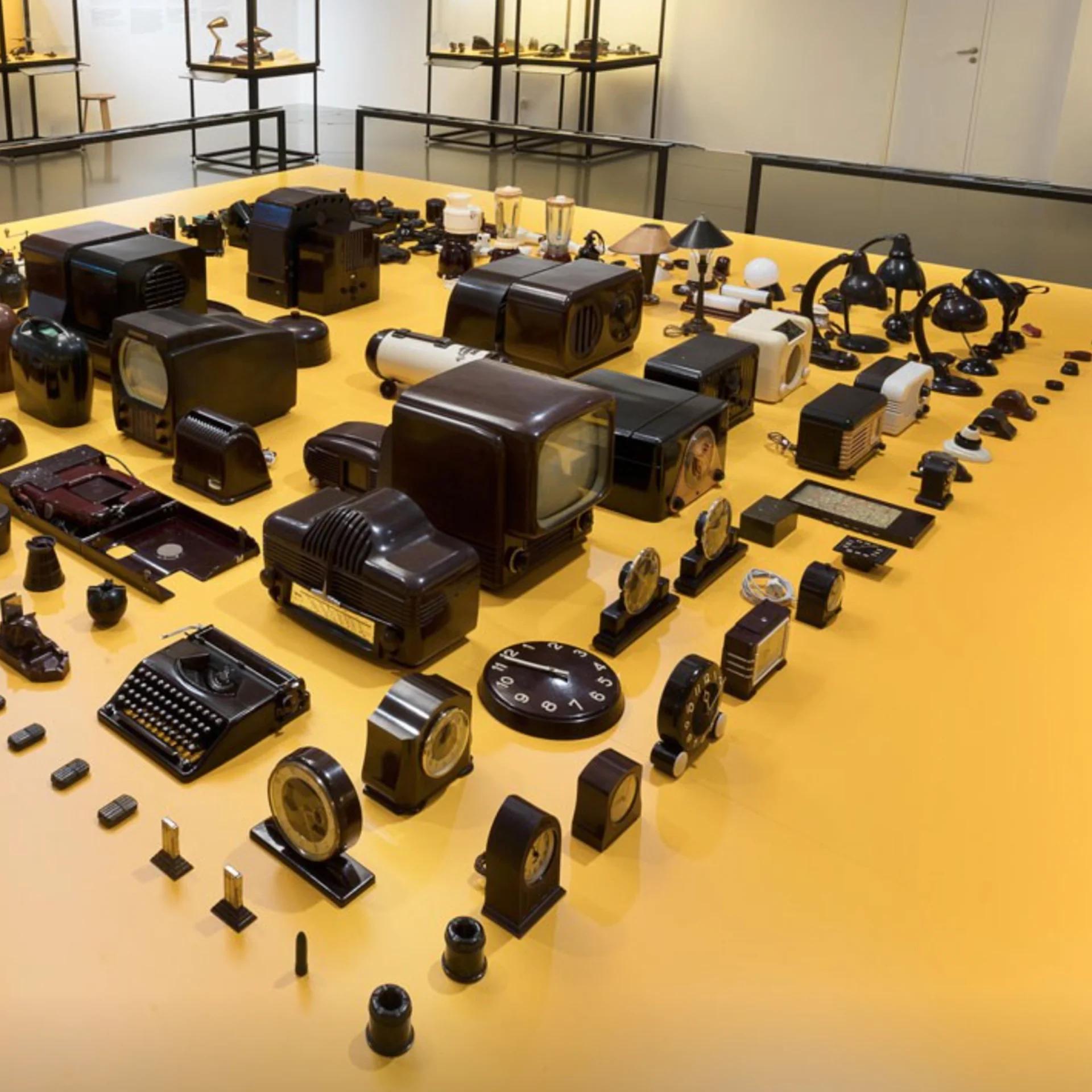
BAKELITE: THE GEORG KARGL COLLECTION PRESENTED AT THE MUSEUM OF APPLIED ARTS (MAK) IN VIENNA IN 2020. EXHIBITION DESIGN BY MLADEN BIZUMI
Photo © Aslan Kudrnofsky / MAK
I meet Mladen Bizumic in his large, meticulous studio in Vienna on a hot, late summer day and am greeted by a tall smile and a New Zealand accent. I’ve come to ask the multidisciplinary artist and expert on the evolving culture of image-making about his connection to the late gallerist Georg Kargl, whose exceptional collection of Bakelite design objects was the subject of a MAK Museum exhibition last year. Bizumic designed the carefully executed exhibition of his late friend and gallerist's treasures, which presented 14 categories of products on brilliant yellow stands and in minimalist metal display cases. Suddenly, these objects from a bygone era resembled artifacts from a futuristic archeological dig, an effect that says as much about Bizumic’s worldview as it does about the collection itself.
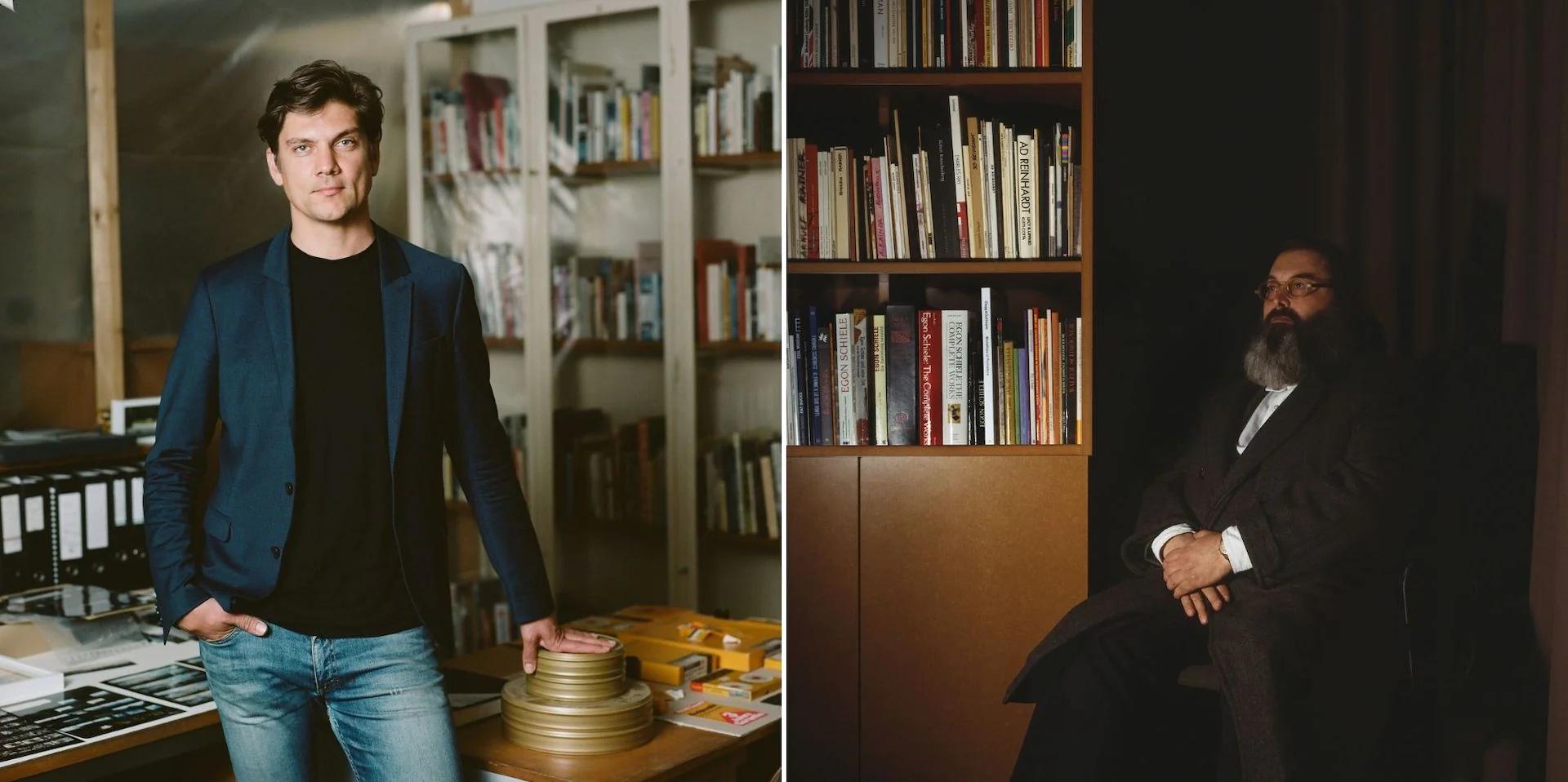
MLADEN BIZMIC IN HIS VIENNA STUDIO | THE GALLERY PROPRIETOR BY CLEGG & GUTTMANN, 2013. A PORTRAIT OF GEORG KARGL
Left: Photo © Christoph Liebentritt; courtesy of the artist and Georg Kargl, Vienna | Right: Photo courtesy the artists and Georg Kargl, Vienna
Born on November 17, 1955, Kargl first worked as a bricklayer and carpenter before pursuing a career in the arts. By the time he passed away in 2018, he had become a significant protagonist in Vienna’s contemporary art scene as well as a respected expert in Viennese modernism. The MAK exhibition was organized posthumously by those close to him.
Separate from his status in the contemporary art world, Kargl was also a passionate collector of and authority on Bakelite among many other privately kept interests. Bizumic explains, “He would often collect duplicates of the same object, whether at auction or at flea markets, so there was a real quiet compulsion there.” Kargl’s collections of Bakelite and African masks were kept virtually secret while he was alive, and only those invited to his home were ever aware.
This approach to collecting as a life-long intellectual pleasure instead of calculated speculation suits Vienna’s tempo, says Bizumic, “Vienna’s pace is slower than other cities. It allows for one to deeply engage with a subject in a different way, perhaps also to collect in a different way than one could in a bigger city.” A more measured, nostalgic mentality does fit the bill; having grown up in Vienna I recognize it as the reason I left at 18—and the reason I so enjoy returning now.
Spanning more than 30 years, Kargl’s Bakelite collection offers insight into the history of the first truly synthetic plastic, a material that helped define the golden age of industrial mass production in the first half of the 20th century. From its market launch in 1920 following its invention by Belgian chemist Leo Hendrik Baekeland (1863‒1944), Bakelite became the material of the moment for the electronics and technology industries thanks to its hardness and resistance to heat and acids. In the Machine Age, as it was called, visionary designers exploited the sculptability of Bakelite to produce iconic “streamlined” designs for mass consumption, such as the Brownie camera designed by Frank A. Brownell for Kodak and the Radio Nurse baby monitor designed by Isamu Noguchi for Zenith, both launched in the 1930s.
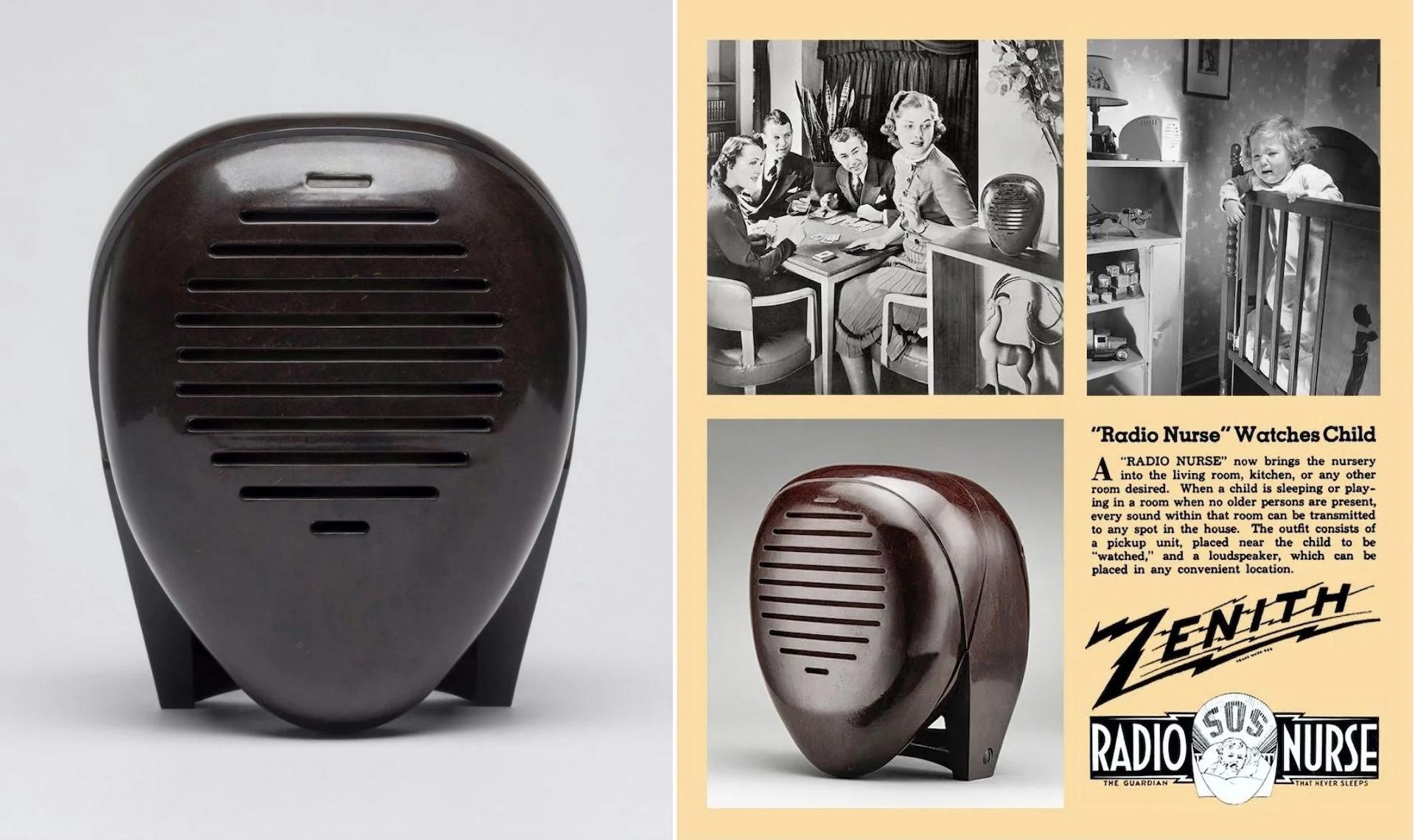
ISAMU NOGUCHI'S FIRST INDUSTRIAL COMMISSION THE RADIO NURSE (1937) CAN BE FOUND IN MUSEUM COLLECTIONS AROUND THE WORLD | ZENITH ADVERT FROM 1938, FEATURED IN MOTHER’S LITTLE HELPERS: TECHNOLOGY IN THE AMERICAN FAMILY BY HANNAH ZEAVIN, TO BE PUBLISHED BY MIT PRESS IN 2023
Left: Photo © The Isamu Noguchi Foundation and Garden Museum , New York / Artists Rights Society (ARS), New York; courtesy of the Philadelphia Museum of Art
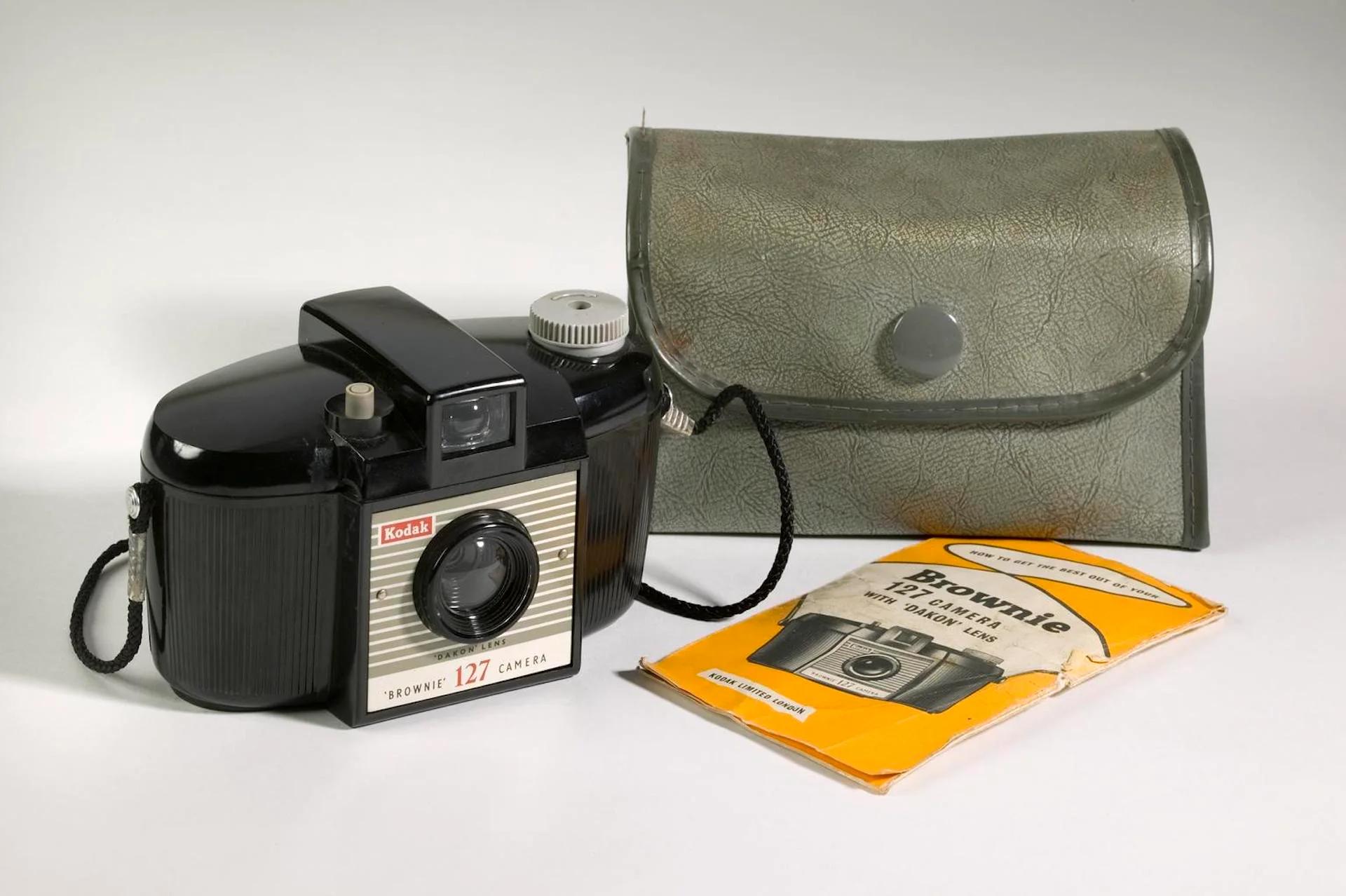
KODAK BROWNIE 127 WITH CASE, C. 1965, FROM THE SCIENCE MUSEUM GROUP COLLECTION. THE ICONIC BROWNIE WAS A BEST SELLING PRODUCT THROUGH THE DECADES OFF KODAK’S MARKET DOMINATION
Photo © The Board of Trustees of the Science Museum
Kargl’s Bakelite collection invites reflection on how new materials contribute to the social fabric in times of radical change. During its short domination, Bakelite shaped modern society. When more efficient plastics were developed, the material was retired and mostly forgotten, except for a small niche that appreciates its aesthetic value. The cycles of corporate capitalism relegated the once innovative Bakelite designs as well as the Kodak company to our material past, leaving only fastidious collectors and researchers like Kargl and Bizumic to mourn the loss.
“Personally I am not interested as a collector in Bakelite, although I’ve spent so much time with the objects for this show. For me, it is too stuck in the past, too rigidly fixed in its historical setting,” Bizumic tells me as he handles a substantial block of obsidian black Bakelite. Bizumic collects photographs instead. It seems he has always been more interested in the bigger picture.
He shows me a model of his upcoming exhibition at the Ringling Museum in Florida, wherein one of his works features the first image ever scanned following the invention of the photo scanner at the US National Bureau of Standards in 1957, developed by a team led by Russell A. Kirsch. The first photo to pass through this machine was a 5 cm square image of Kirsch's then-three-month-old son Walden. The perfect subject, given the undying popularity of capturing darling slices of childhood since the invention of affordable film cameras and the adoption of photography by the general population. Kodak’s clever marketing strategies recognized that husbands were most often the wielders of the family camera, and the wives played the role of categorizing and filing family moments for future sentimental consumption. It put photography in the hands of amateurs, allowing the middle class to collect and conserve personal memories as “snapshots.” Bizumic’s art practice explores these rich and layered connections and the social milieus that underlie photographs and how we produce them.
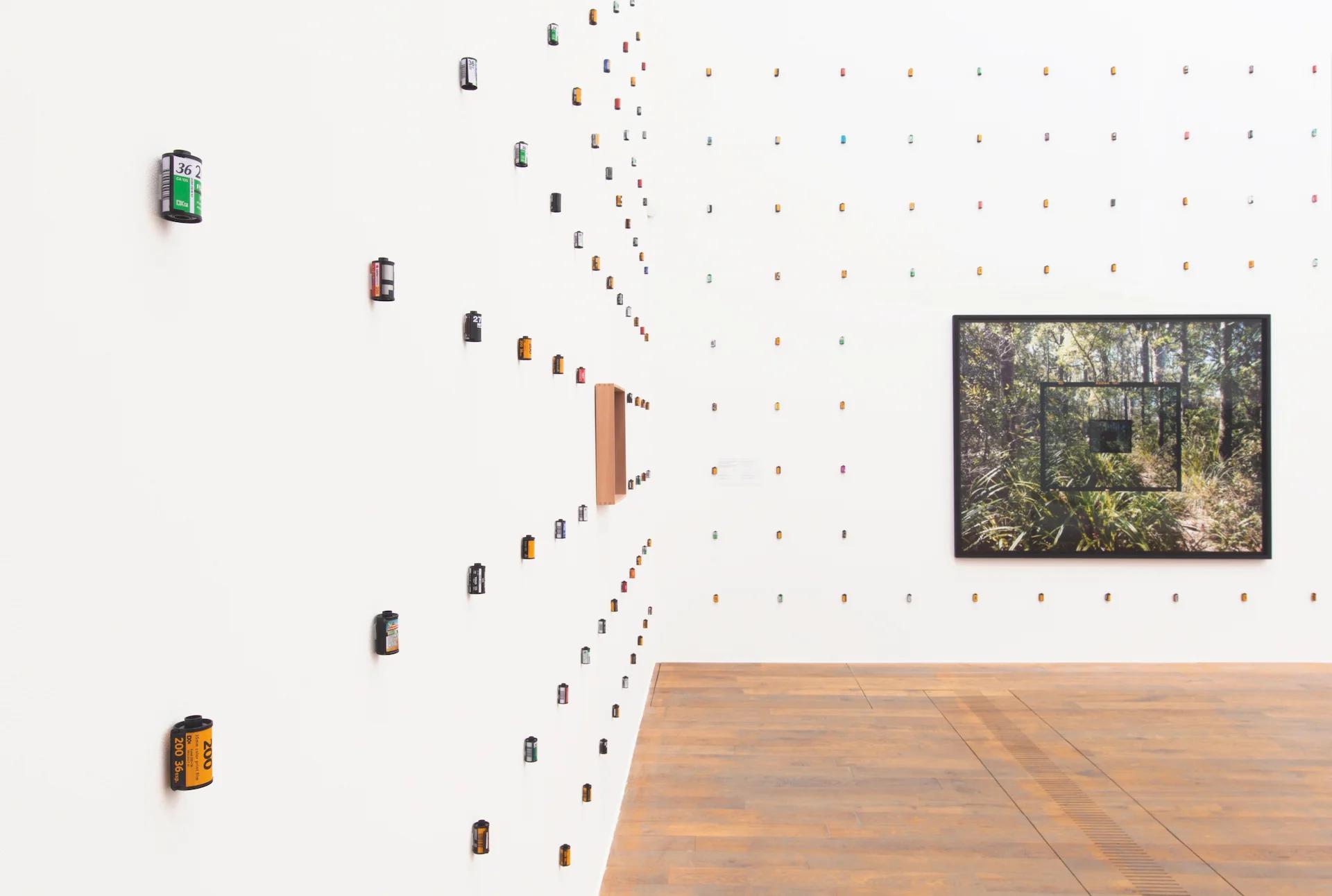
EXHIBITION VIEW OF MLADEN BIZUMIC: KODAK EMPLOYED 140, 000 PEOPLE. INSTAGRAM, CURATED BY ADAM CARR AND PRESENTED AT MOSTYN IN WALES IN 2016-17. THE PROJECT EXPLORED THE GLOBAL RISE, DOMINATION, AND DOWNFALL OF THE EASTMAN KODAK COMPANY, A LENS THROUGH WHICH TO SEE THE BROADER IMPLICATIONS OF THE SOCIETAL SHIFT FROM ANALOG TO DIGITAL PHOTOGRAPHY AND SOCIAL MEDIA PLATFORMS
Photo © Dewi Lloyd; courtesy of the artist and Georg Kargl Fine Arts, Vienna
Kodak filed for bankruptcy in 2012 following a dramatic downfall partly due to the rise of digital photography and partly due to its leadership’s failure to recognize the new technology’s potential. The brand’s hubris was all the more tragic given the fact that the first digital camera was invented by former Kodak engineer Steve Sasson, whom Bizumic interviewed for his book Photo Boom Photo Bust (2018). When Sasson first pitched his invention to Kodak executives, he was snubbed and silenced—a missed opportunity that cemented Kodak’s demise.
The challenges that analog film suffered in the face of technological and social advances are not unique, but it’s up to us to decide what to take from its legacy. Analog photography became redundant because it was too material, in the same way Bakelite was too rigid, unable to dematerialize. Technologization and the subsequent death of production processes at the hand of greater efficiencies are the ongoing reality of capitalist “progress,” inevitably leaving once cherished products and practices in its wake.
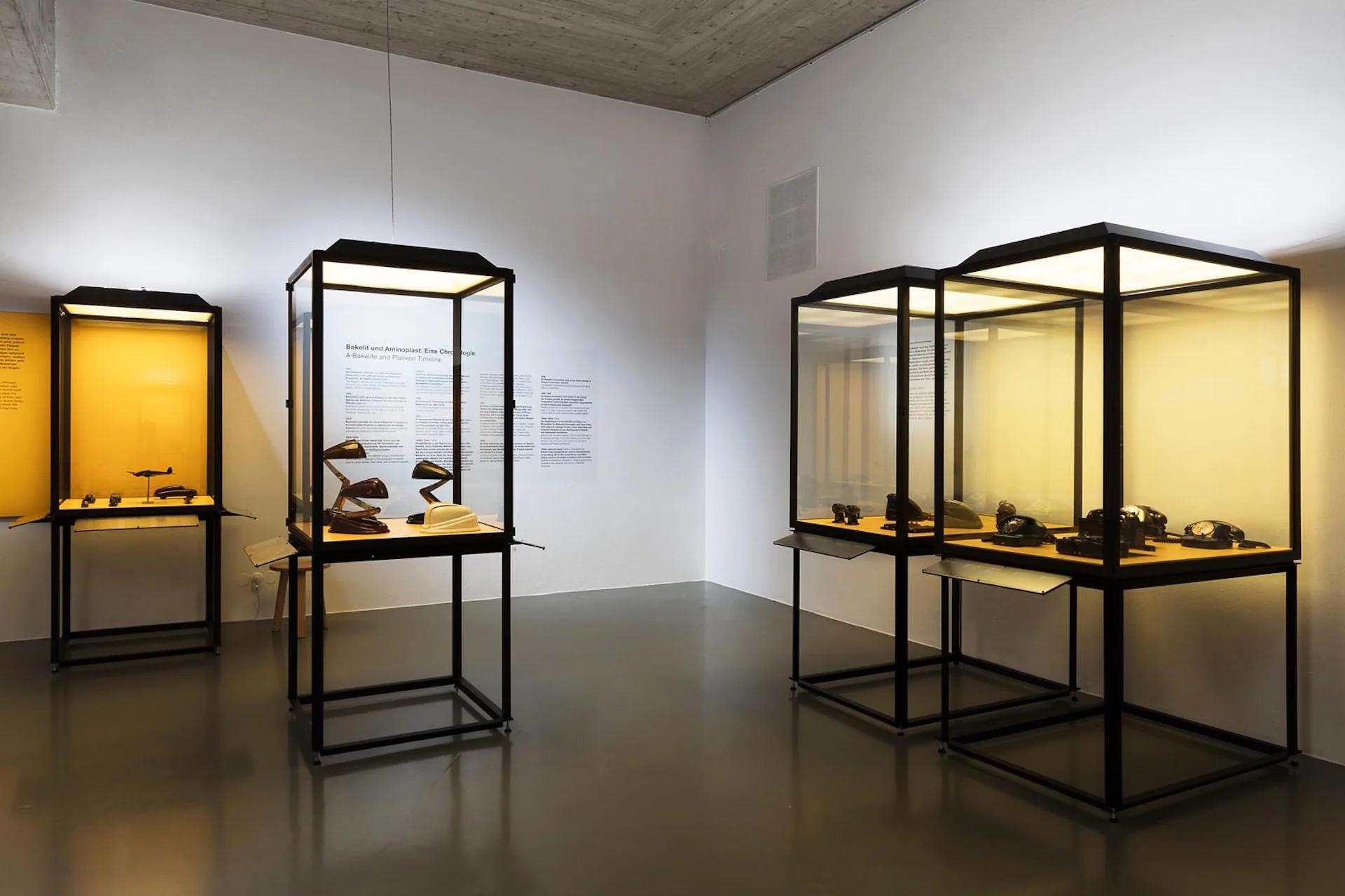
BAKELITE: THE GEORG KARGL COLLECTION PRESENTED AT THE MUSEUM OF APPLIED ARTS (MAK) IN VIENNA IN 2020. EXHIBITION DESIGN BY MLADEN BIZUMI
Photo © Aslan Kudrnofsky / MAK
Both Kargl and Bizumic adopted their own ways of collecting and recording the memento-moris of our material past, both sharing a focused interest in forgotten forms and how they reflect where we are headed. Both found themselves bearing witness to the potentials of material and, as Bizumic notes, “conserving the past against the unknown benefits of a future technology.” Just like then, we now find ourselves continuously on the threshold of a new era. For some of us it will be enough to find a quiet nook in this world to collect, reflect, and let future generations do the rest. ◆
